
George Hill
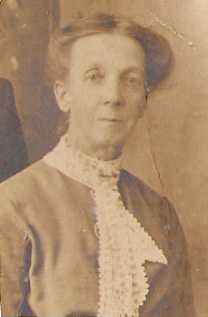
Alice Hill
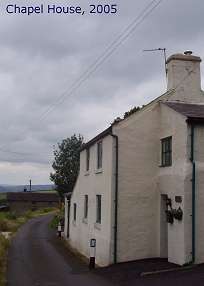
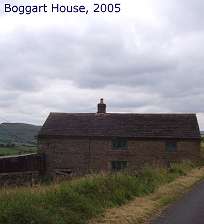
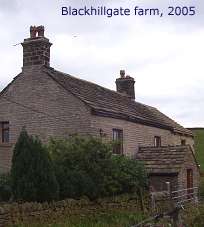
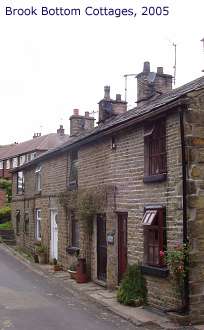
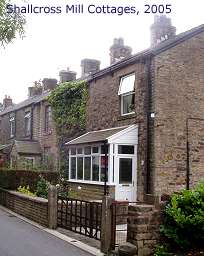
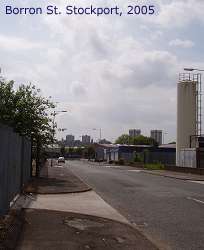
George Hill, 1860-1917
The life of a working
man
by Charlie Hulme
Part of Charlie Hulme's history site
Five Lane Ends
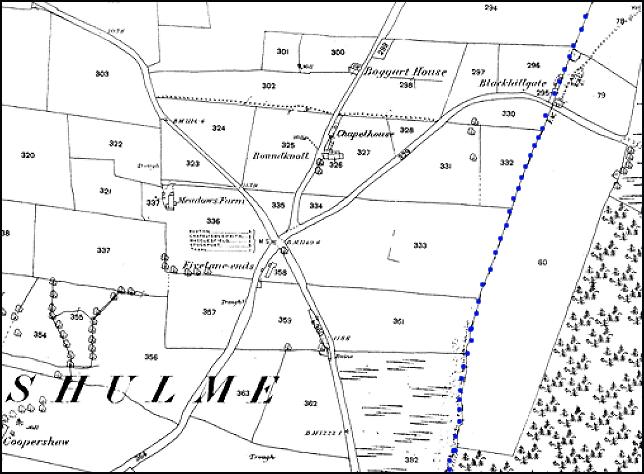
Five Lane Ends, shown above on a map from c.1880, is a hamlet outside the village of Kettleshulme in Cheshire, hard by the Derbyshire border (matked in blue on ther map), in hill country of scattered farmsteads; the origin of its name is clear from the map. My Great-Grandfather, George Hill, was born there on 25 March 1860; his father’s family had lived in the area for generations, but George, in the spirit of the times, had a more varied life, ending his life in the industrial town of Stockport, twelve miles to the north. This move set off a chain of events which eventually led to my being the first in my family to go to University and enjoy the easier life of a man who doesn't have to work hard just to survive. In these notes I have tried to trace his life and times through the resources available on the web and in libraries, and walked his streets to see what remains today and what has changed.
The census-taker in 1861, who in this rural area had to walk miles just to fill a single page of his book, found a little community in Five Lane Ends composed of members of the Hill family. ‘Old Chapel House’ (also known as the Old Chapel) is recorded as having two households.
The household at 'Old Chapel House No. 1' comprised George’s grandfather - my great-great-great grandfather - John Hill (1789-1868), widower and cotton weaver, his eldest son William, age 48, also a widower working as a stone cutter, and William’s daughter Ann Hill, age 20, silk weaver. John's wife, Ann (née Ollerenshaw), had died in 1830.
'Old Chapel House No. 2' has my great-great-grandfather James Hill, third son of John, as head of the household, aged 35 and a silk weaver. His wife Isabella, aged 21, is the only ‘foreigner’ in the family, having been born in Mellor, Derbyshire. She came to Kettleshulme with her father, Thomas Armstrong, who had moved his family to Kettleshulme from Heyrod, Lancashire, probably to work in the Lumb Hole candle wick mill. Also recorded were their children Thomas, aged 3, Elizabeth Ann, aged 2, and my great-grandfather George Hill, aged 1.
Nearby at 'Boggart House' lived James's brother, John Hill's second son Ebenezer Hill (1823-1915), silk weaver and farmer (6 acres) who had married Maryann (or Mary Ann) Boothby (1830-1872), silk weaver, in 1845, with their family of eight children: John (12) and William (10) were already working as Silk Weavers, and Ann (10) and Sarah (8) were shown as Silk Quill Winders. Mary (7) and Elizabeth (5) were ‘scholars’ and there were the babies Ebinazer [i.e. Ebenezer jr.] (3) and Jabez (1).
Old Ebenezer was the last of the
Hills to live at Five Lane Ends: the 1911 census records him living
alone at Chapel House, a widower and 'retired silk weaver'. The 1911
census required householders to give a count of 'children born' and
'children who have died.' According to Ebenezer, he had 14 children, 8
of which had died. By 1911 Boggart House had passed to farner George
Brocklehurst, and his family; there were several Brocklehurst families
in Kettleshulme. Ebenezer died, aged 92, in 1915, at Spout House
in Kettleshulme. His list of children so far traced is Martha* (1845),
John* (b.1846), William (b.1848), Ann(e)*, (b.1850), Sarah*
(1852-1929), Mary* (b.1854), Elizabeth* (b.1856), Ebenezer*
(1858-1887), Jabez* (1859-1877), Ellen* (b.1862), George (b.1864), and
Alfred (b. 1871). names marked * have been verified from the Taxal church register.
Kettleshulme to Whaley Bridge
By the time the 1871 census taker arrived at Chapel House, my great-great-grandfather James Hill’s family had grown: George was now 11 and had younger siblings Pamela (9), Benjamin (6) and Hannah (2) Eldest brother Thomas, now 13, was working as a Cotton Piecer, whilst Elizabeth Ann, George, Pamela and Benjamin were now scholars.
But great changes were to overtake the family: James and Isabella both died in 1876, leaving their children orphaned. How they coped with this trauma will probably be never be discovered, unless another descendant has some records, but by 1881, George, by now 'of age' at 21 had moved down to the Toddbrook valley below Kettleshulme village.
He was head of his own household, living at No. 2, Brook Bottom Cottages, and working as a coal miner, with sister Elizabeth Ann (22), now a cotton piecer, sister Pamela (19) a housemaid and brother Benjamin (16) a waggoner in a coal mine, and youngest sister Hannah (12) recorded as a ‘scholar.’
George’s
elder brother Thomas was married by this time, working as a ‘cotton
slubber’
and living in a cottage at nearby Hardy Green with his wife Eliza and
their two-year-old son Inkerman and his wife’s sister Sarah Pennington.
Inkerman Hill later became well-known in the area as a
professional photographer, with his name on many families' treasured
photographs.
A couple of years later George found himself a wife: Alice Boothby, daughter of William Boothby of Black Hill Gate (or Blackhillgate) house, up in the hills not far from Chapel House, and a member of one of Kettleshulme’s largest families, who became my great-grandmother. My late mother always used to say (especially when I was being difficult) that the Boothbys has a reputation as a ‘stiff-necked and rebellious people’ and it does seem that this trait was passed down our side of the family! George and Alice’s marriage was registered in December 1883.
The history of coal mining in Whaley Bridge is complex, to say the least; family tradition has it that George worked as a miner at 'Gisborne's Pit' which was the oldest colliery in the district, having opened as the 'Waterloo Pit' in 1815 and was also known as Whaley Bridge Colliery, although this name was also used by another mine in Whaley. I wonder, however, whether his first mining job might have been at the Shallcross 'New Pit' which was nearer to his home in Kettleshulme, but was abandoned in 1887.
At any rate, by 1891 we find George and Alice living in a cottage on Shallcross Mill Road, with their two sons James (born 1885 - my Grandfather) and William (born 1890). James and William were destined to be the full extent of their family.
Coal mining was once a significant industry in Whaley Bridge, but the coal was generally of poor quality and the seams thin, and as the turn of the century approached the labour requirements began to decline. The very last mine in Whaley Bridge closed in 1925, leaving only the pit serving the brickworks in nearby Furness Vale, and today there is little to show in Whaley that the mines every existed, just one building, the 'upcast shaft' which was part of the ventilation system of the Gisborne Pit, still remains, along with occasional 'warning - old shaft' sign and some houses showing signs of mining-related subsidence.
Stockport
It appears that George may have lost his job, or seen the end approaching, for by 1901 they had moved the ten miles to the town of Stockport, where in 1901 we find them in a cottage in Portwood Hall Place, with both George and his elder son James (now 15 years old) shown as Coal Miners. At this time, the Lingard Lane colliery in Bredbury, not far from Portwood, was being developed to work the reserves in that area, and I feel this must have been where George and James worked. However, a 1906 Stockport directory refers to George as a 'lamplighter' - the man who walked round each evening lighting the gas-fuelled street lamps. This looks like a job for a man no longer fit enough to work down the mine; although George lived another ten years; he died in Stockport in 1917, aged 57.
His elder son James appears not to have lasted long as a coal miner; I believe he ran a bicycle repair business in the Portwood area for a while, and worked in a engineering factory during World War I before moving back to the Whaley Bridge area with his family, including his widowed mother Alice. Another page on this site will take up his - and my - story. Younger son William also became an engineer, and lived in the Portwood area for the rest of his life.
Following George Hill's journeys in 2005 and 2006 while compiling this page, it was pleasant to discover that all the houses he is recorded as having lived in, in the Kettleshulme and Whaley Bridge area, are still in existence and flourishing as dwellings, as the pictures show. Kettleshulme has changed little, with hardly any new building around Five Lane Ends, and the bleak beauty of Windgather Rocks and Black Hill remains undimmed.
In Stockport, however, the houses and most of the streets George knew were destroyed (including the historic Portwood Hall, dating from Tudor times) in the late 1960s for redevelopment, and much of the area is now a wasteland of widened roads, industrial units, and retail parks. Brunswick Wesleyan Chapel, where my Great-grandfather was married and buried, closed in 1955 and was later demolished. The gravestones remained in place for a while, but the place is now marked only by the empty derelict graveyard frequented by glue-sniffers and the like.
The houses of Portwood were considered 'unfit for habitation' - and from what I recall of William Hill's house in Denton Street it would be hard to disagree - but little of what has replaced them could never be described as beautiful. Such is the cyclic nature of life that after growing up in Whaley Bridge I now find myself living in Stockport, although fortunately in a leafy suburb which a hundred years ago was the preserve of the owners of hat factories and other wealthy merchants of the time.
- Charlie Hulme, March 2006. Last updated July 2013.